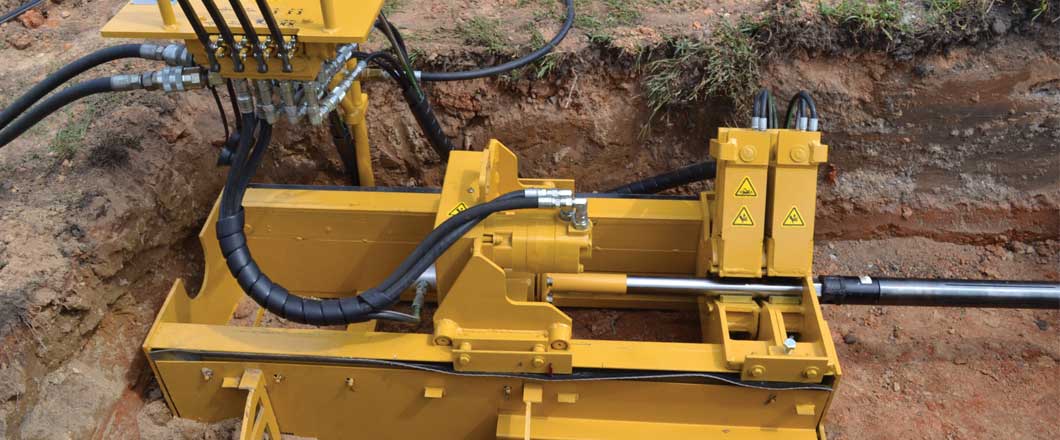Creating Bends: The Artistry Involved in Directional Boring

Directional drilling techniques is a revolutionary technique that has revolutionized the approach to drilling in various industries. Unlike conventional vertical drilling, this creative method allows for the creation of inclined boreholes, facilitating the extraction of resources from more substantial depths and complex geological formations. As we delve into the artistry involved in directional drilling, we will investigate its history, technology, and the noteworthy applications that have emerged from this innovative technique.
From the oil and gas industry to infrastructure installation and green energy projects, directional drilling offers a bounty of advantages over standard methods. By lessening surface disruption and maximizing efficiency, this technique has become indispensable for contemporary infrastructure development. In this article, we will dissect the basics of directional drilling, examine its evolution, and highlight the key benefits that make it an essential tool for engineers and contractors alike. Whether you are a experienced professional or a newcomer to the field, the insights shared here will deepen your understanding of this changing area of drilling technology.
Understanding Directional Drilling
Directional drilling is an innovative technique used to establish boreholes at various angles rather than just vertically. This approach allows professionals to tap into resources that are not immediately beneath the drilling site, making it highly valuable in fields like petroleum, utilities, and alternative energy. By adjusting the drill path through exact angular changes, operators can navigate around obstacles, lessen interference on the surface, and enhance access to hard-to-reach areas.
The advancement of this technology has profoundly changed the landscape of drilling operations. Early angled drilling methods were labor-intensive and often dependent on trial and error, leading to losses and increased costs. Today, state-of-the-art equipment, cutting-edge software, and new techniques have vastly improved correctness and trustworthiness. The integration of instruments and real-time data monitoring enables professionals to make informed decisions, ensuring ideal bore routes and successfully achieving the project objectives.
As the demand for green construction increases, understanding the details of directional drilling becomes crucial. This technique is not only essential for traditional energy projects but also plays a critical role in city development and the installation of utilities, minimizing outdoor disruption. By taking advantage of the merits of angled drilling, industries can tackle projects more efficiently while considering eco-friendly concerns, finally paving the way for more eco-friendly operational practices.
Advantages and Advantages
One of the main benefits of directional drilling is its ability to minimize surface disturbance. Traditional drilling methods often require extensive clearing work and access roads, damaging the surrounding ecosystem. In contrast, directional drilling allows for the use of a much smaller footprint, as drilling can be launched from a central point and then guided underground to the desired site. This is particularly helpful in urban areas or environmentally sensitive locations where surface disturbance must be reduced.
Duration and cost savings are important advantages of directional drilling techniques. By allowing multiple wells to be drilled from a single location, operators can lessen the time and resources spent on site preparation and restoration. Additionally, the exactness of directional drilling diminishes the risk of encountering unexpected geological issues, which can lead to expensive delays and complications. With effective planning and execution, projects can be completed faster, allowing companies to optimize their investments.
Directional drilling also presents notable ecological advantages. It minimizes the effects on natural ecosystems, as fewer drilling sites are needed when wells can be drilled horizontally to reach several targets. https://gmaccontractors.com/ can help safeguard habitats and minimize damage to soil and waterways. Furthermore, as industries move towards more sustainable practices, directional drilling offers a way to align infrastructure development with ecological responsibilities, supporting the shift to more sustainable solutions.

Emerging Trends
The arena of directional drilling is continuously changing, propelled by advancements in technology and a growing emphasis on sustainable practices. One of the notable trends is the integration of artificial intelligence and automation, which are poised to enhance the precision and performance of drilling operations. These advancements allow for real-time data analysis, enabling teams to make educated decisions on drilling paths and adjustments without physical intervention. As these technologies advance, they ensure to reduce errors and improve general drilling precision.
Another remarkable trend is the expanding use of cutting-edge sensors and software in directional drilling. These tools not only aid in bore tracking and surveillance but also provide detailed data on earth conditions and ecological effects. The capability to analyze this data in real-time supports more effective planning and execution of drilling projects, particularly in difficult environments. Furthermore, these technologies help in maintaining safety protocols and environmental compliance, which are crucial in today’s regulatory framework.
Lastly, as the focus on sustainable energy increases, directional drilling is anticipated to play a pivotal role in the development of sustainable infrastructure. Developments in drilling techniques and equipment designed for minimal environmental disruption are becoming more common, addressing challenges associated with conventional methods. This transition not only establishes directional drilling as a crucial component in energy transition efforts but also supports the exploration of energy sources like geothermal resources and wind, expanding the applications of directional drilling in the renewable sector.
